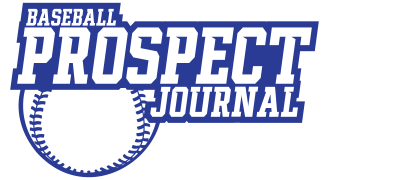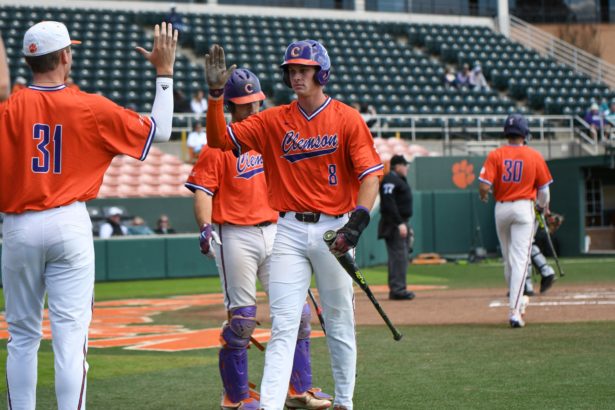BROOKLYN, N.Y. – Switch-hitting is a craft that takes discipline and concentration to master to its fullest effect. A hitter invests time in ensuring their swing remains level at both sides of the plate while adapting to the arm angle of the opposing pitching. Add the adjustment to hitting with wood bats for a player in professional baseball, and it takes on greater mastery.
Oakland A’s first-round pick Logan Davidson focused heavily adapting to switch-hitting and to the wood bat during two stints in the Cape Cod League and in his first month in Oakland’s minor league system. Davidson faced early struggles at each stop but began to adapt once he harnessed his swing.
“Switch-hitting is a different animal. Baseball is hard in itself, just trying to find a routine on a daily basis, but switch-hitting takes a lot of effort and energy. It takes double what people normally have to go through because you have to keep up with two different swings,” Davidson explains.
“It’s like having two different people at the plate. Sometimes it is nice because you get a break if you are struggling from one side. Timing depends on how comfortable you are in the box. You don’t want to exert all of your energy into cage work when you play every day.”
Throughout the process, Davidson had the appropriate guidance to help him understand the challenges within baseball. His father Mark Davidson was a major league outfielder for six seasons and was a member of the 1987 World Series championship Minnesota Twins team.
While Davidson was born a decade later, his shared experiences still resonated when he served as one of his coaches at Clemson during the 2018 season. He also took classes with him to complete his degree nearly four decades after leaving the school to pursue a big-league career.
“My dad is the reason why I became a switch hitter. He played in the big leagues and was mostly a pinch hitter against lefties, so he saw the value of hitting from both sides of the plate, especially left-handed,” Davidson said.
“It was a pretty cool experience having him there at Clemson two years ago and have a resource like that. A dad that loves and cares about you and be there on a daily basis hitting in the cages. It was an incredible experience that I wish I can do again.”
Playing for a university that contains a family legacy can sometimes put pressure on an individual to match or exceed the expectations, but Davidson felt right at home from the start. As a freshman, he became an All-ACC Academic selection recording a .388 on-base percentage and was the first Clemson Tigers shortstop since Taylor Harbin in 2007 to crack double digits in home runs.
“You definitely feel a little bit of pressure as a freshman when you first come in and the expectations coming out of high school with the draft, but it didn’t take me too long to fit in at Clemson,” he said.
“The group of guys that were there and the coaching staff were incredible. I had a nice career at Clemson, and I would not change a thing. It was an incredible time where I had so much fun. I can’t wait to come back in the offseason to train with these guys.”
During his sophomore season, Davidson made the Brooks Wallace Awards Watch List and increased his slugging percentage and OPS by nearly 100 points. Davidson batted in front of Seth Beer, a future first-round pick of the Houston Astros and the centerpiece of the Zack Greinke trade with the Arizona Diamondbacks in July. Beer’s approach and leadership role left an impression on Davidson and the rest of the Clemson roster.
“I think Seth was a special guy. He worked harder than anybody else. He would be in the cages every night after games, even if he had a decent game,” Davidson said.
“He was very passionate about the game, and that rubbed off on the rest of the team. They saw how hard he worked and what it took to be really good at the game. He influenced rubbed off on the younger players as well.”
Davidson’s stock continued to climb last spring as he developed into one of the top shortstop prospects in the ACC. Selected to the Golden Spikes Watch List before the season, Davidson hit .294/.408/.544 with 15 home runs and a 1.001 OPS. His production translated to the infield where he committed just nine errors at shortstop.
“I think the growth you have in life, in general, comes down to experience,” he said. “So the more experience you have doing something, the better you are going to get. You learn through trial and error when you make mistakes. Having spent three years in Clemson and now playing in summer ball and be able to adapt to things in pro ball takes experience, and then it leads to the results.”
He would also garner recognition from the school as the top ACC scholar-athlete for all sports. Clemson holds high benchmarks for their athletic achievements as demonstrated by Trevor Lawrence leading the school to the National Championship in college football last fall. Its baseball program maintains similar standards with first-round picks in successive MLB drafts.
“It meant a lot for sure,” Davidson said. “Clemson is a great place. It is one of my favorite places to be and to go. It meant a lot to me to earn those honors. I worked hard in the classroom and worked really hard on the field as well. If you put those two together, you get rewarded for your efforts. It’s a nice feeling.”
Upon signing with the A’s as their 29th overall selection, Davidson visited the Oakland Coliseum and took infield practice with the club. Being a part of the A’s organization contains a deeper meaning for Davidson, whose father was teammates with Billy Beane during their playing careers in Minnesota. The welcoming surroundings also provide an incentive for his future aspirations.
“That was a pretty cool experience to visit the Oakland Coliseum and get to locker with a big-league team and take BP with them on a game day with all the media and the videos,” Davidson said. “I’ll never forget the experience and camaraderie of the guys in the dugout and how it was similar to every other level. My dad’s connection with Billy Beane also meant something just knowing the history there and the great organizational leadership with the A’s. It’s something I’ll never forget as well.”
While scouts compare Davidson to Jed Lowrie or Corey Seager, he modeled his left-handed swing after Joe Mauer. Davidson concentrates on keeping his hands through the strike zone and pulling the ball to right field. He also can stay back on the ball from the right side of the plate with coverage of the outside pitch. As a defender, he has soft hands with an accurate throwing arm and profiles as a solid two-way player.
“During my first professional season, I have not seen a lot of lefties. Most of my at-bats have come from the left side. I have put more time on that side because of the pitchers I have seen,” Davidson said. “You definitely have to put in work from both sides. I think adjusting to the off-speed pitches is something I’m working on. I never had any issues with fastballs. Working on pitch recognition is important in moving forward.
“Defensively is a steady grind trying to stay in my legs because I’m a taller and bigger-bodied shortstop. It takes a little bit of focus to stay in your legs because it leads to everything else when playing the position. If you have good footwork, you are going to make good throws and be in a good position to release the ball. That is what it is all about when you play shortstop.”
Davidson started slowly at the plate with the Vermont Lake Monsters during his first month in professional baseball but found his stroke in recent weeks. From July 31 through the New York-Penn League All-Star break, Davidson is hitting .343/.446/.529 with a .974 OPS. Confidence hitting with the wood bat and improved timing with his swings were critical factors for Davidson’s newfound success. Having an equal form with each swing will go far in determining his offensive potential.
“I started off with an unlucky start. But I think at the midway point after an off-day in Aberdeen is when things turned around,” he said. “I started to get on top of balls and hit more line drives and hard ground balls instead of popups. It’s a long season after college. It’s a quick adjustment getting into pro ball and having to learn the routine, and it took some time to learn the organizational things the A’s do and what I needed to do myself to get ready to play. Having that first season under your belt is helpful.
“It comes down to pitch recognition. It’s tough if you are working behind in counts because it becomes harder to hit. The biggest thing I had to adjust to was recognizing the difference between the pitches I wanted and the pitches I was going to get because it’s two different things. It comes down to realizing what you are going to get and making your approach based off that.”
Read a MLB draft profile on Logan Davidson here.


